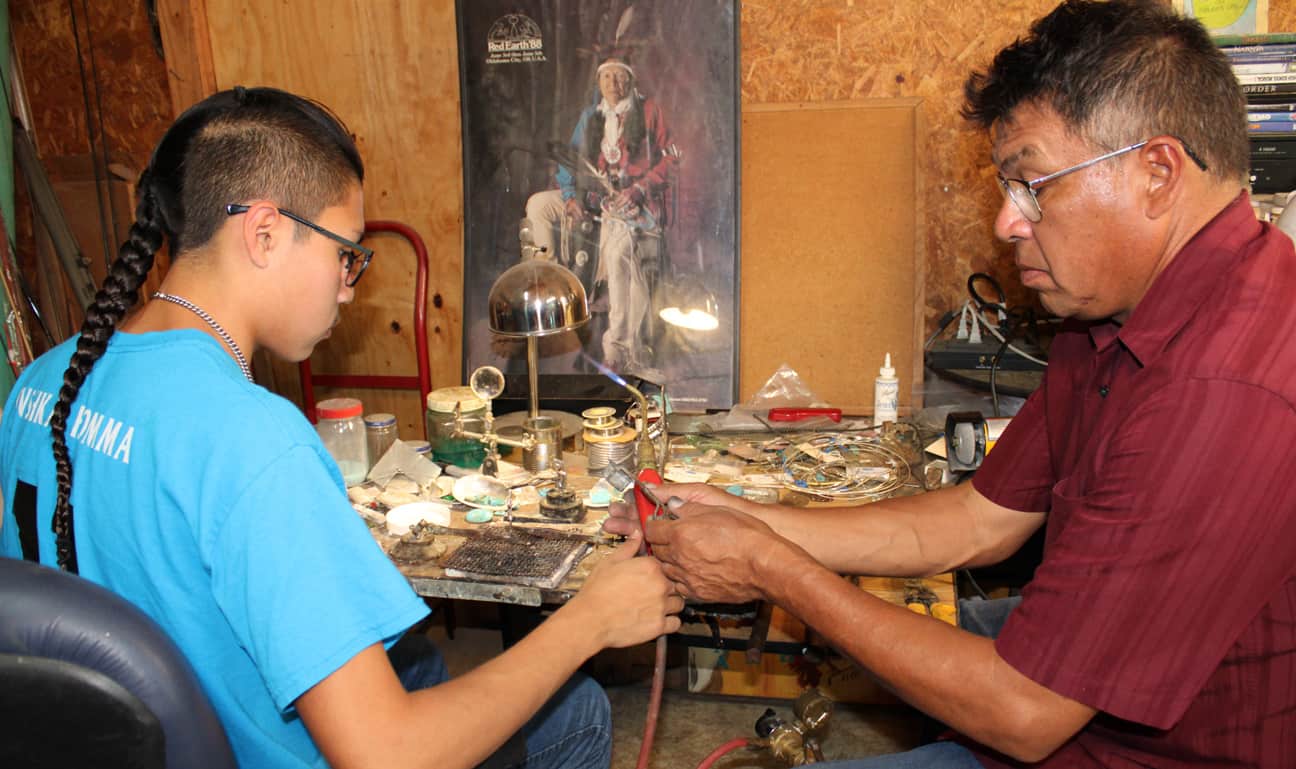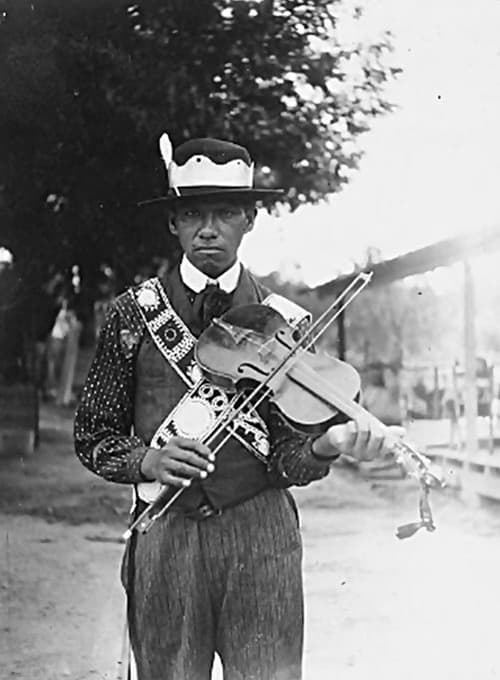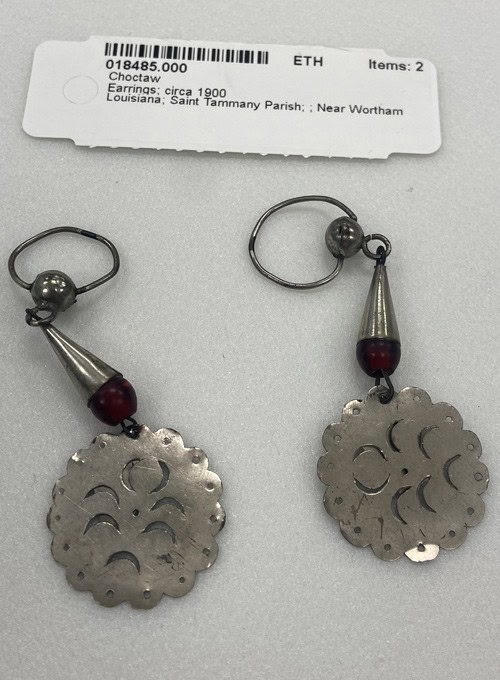
Anthony James passing on generational knowledge to his son, Colt.
Makers and Masterpieces: Silversmith work at the Smithsonian
Iti FabvssaPublished February 1, 2023Last month, Iti Fabvssa shared information about Choctaw baldric sashes held at the Smithsonian and highlighted the skilled craftsmanship still maintained by traditional artisans in the Choctaw community today. We presented a little bit about an informal network of tribal artisans who share the goal of revitalizing Choctaw arts. We also shared that it takes time to develop these skills. This month, we will focus on the art of silversmithing and feature a family who works to honor this tradition by passing on their generational knowledge.
Choctaw people were skilled in making personal adornment through time. Early work included the use of bow drills to make beads from the columella of the Busycon shell. These long, thick, solid, spiraling pieces of shell were a highly prized material for making clothing pins, ear ornaments, and of course, beads (oksup). Shells and stone were also used to make gorgets worn around the neck. Later, Choctaw artisans found copper an excellent addition to their jewelry making, finding it soft enough to add stunning symbols using tools and punches; a tradition we share with our Muskogean brothers and sisters. It is thought that the first contact with the Spanish in the 1500s influenced our metalsmiths. However, we have a gap in our knowledge about the history of how silversmithing began in our tribe.
Silverwork, like the pieces at the Smithsonian (pictured here) created by Hickman Thomas in the late 1800s in Neshoba County, Mississippi, give us a unique lens into the past. They reflect the long tradition of the passing of skill sets onto the next generation. Thomas Hickman’s four-tier gorget is similar in design to gorgets made hundreds, or even thousands, of years ago, yet there is a striking solution that can only be realized by turning it over. To hold the weight of the silver gorgets, Thomas designed rings for a long string of glass beads to pass through to add support as it was worn. This was an exciting discovery! Partnerships with institutions that care for Choctaw collections allow for opportunities to glimpse generational knowledge at work in the craftsmanship of a piece. Every item has a story to tell and possibly a legacy to accompany it.
Anthony James of Talihina, Oklahoma, can speak to this legacy in silversmithing. His father, Harry James, learned from Jerry Lowman of McCurtain county and continued to develop his skill set under his direction, even learning to make silver stickball pendants. As a child, Anthony often watched them and sat tinkering around in the shop right alongside his father, eventually learning the art himself. After high school, Anthony didn’t have much time to devote to learning with the increased demands of work and family. Later in life, he picked it back up after his father passed away. He admits, “I had to learn some things the hard way. Once I got into it, I would talk to my dad and let him know, ‘I wish you were here.'” Anthony offered guidance to the younger generation of Choctaw artists, “If you have a parent that knows how to do this stuff, you need to get in there with them, ask them a lot of questions.”

Hickman Thomas, Neshoba County, MS, 1909.

Silverwork gorget by Thomas.
His son Colt James is taking this guidance to heart. Colt grew up watching both his dad and grandfather work silver in their shop. As he got older, Colt would look around the workbench for pieces that weren’t finished, find stones to shape, and talk with his dad about how to work them into his own masterpieces. His dad would share what worked for him and Colt valued the firsthand lessons. One of the most meaningful pieces Colt made with his father is an eagle feather pendant that symbolizes the long tradition in their family. As he advanced in skill, he shared with his father an idea for a pendant of a feather. When they went into their shop, they noticed among his grandfather’s materials an unused sheet of silver with an eagle feather outline already drawn out. Colt reflected, “It was three generations of work to get this one feather done: the feather shape was marked out by my grandpa, we cut it out and finished it.” Colt proudly wears his pendant every day. Colt says learning to be a silversmith took practice and dedication, “It took a while to learn how to do it and not burn everything, but eventually I started getting it. Every so often, I’d still burn something. It’s something that just happens.” Colt is looking ahead to the future but is grounded in his family’s past. He understands he is the next generation to forge a legacy, “I think about how it was something my grandpa did, back all those years ago. Then my dad started doing it. Now I am.”
Next month, Iti Fabvssa will continue to share objects from the Smithsonian and highlight the connection between basket makers and their communities.

Silverwork, Neshoba and Scott County, 1860 to 1900.

Silver Earrings, Saint Tammany Parish, Lou- isiana, circa 1900.